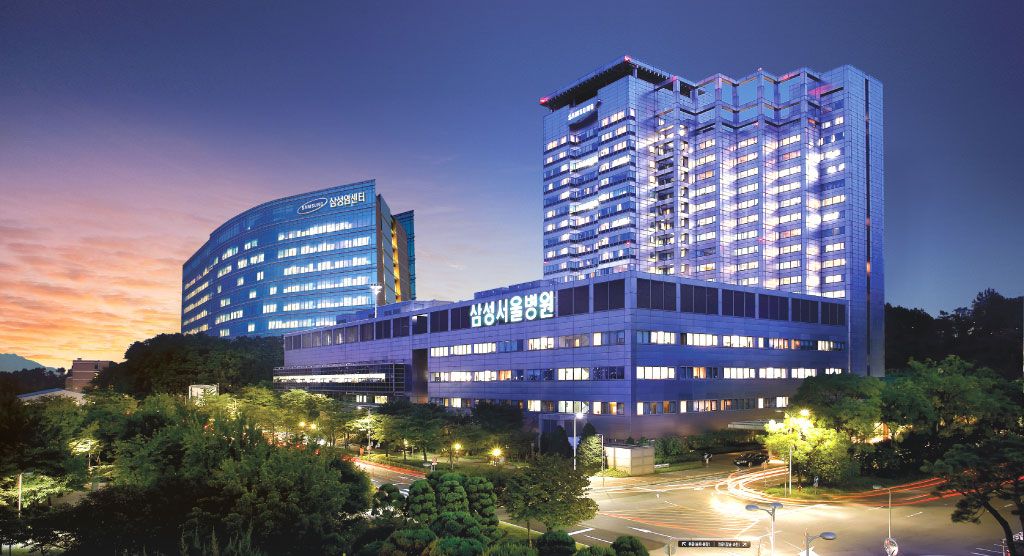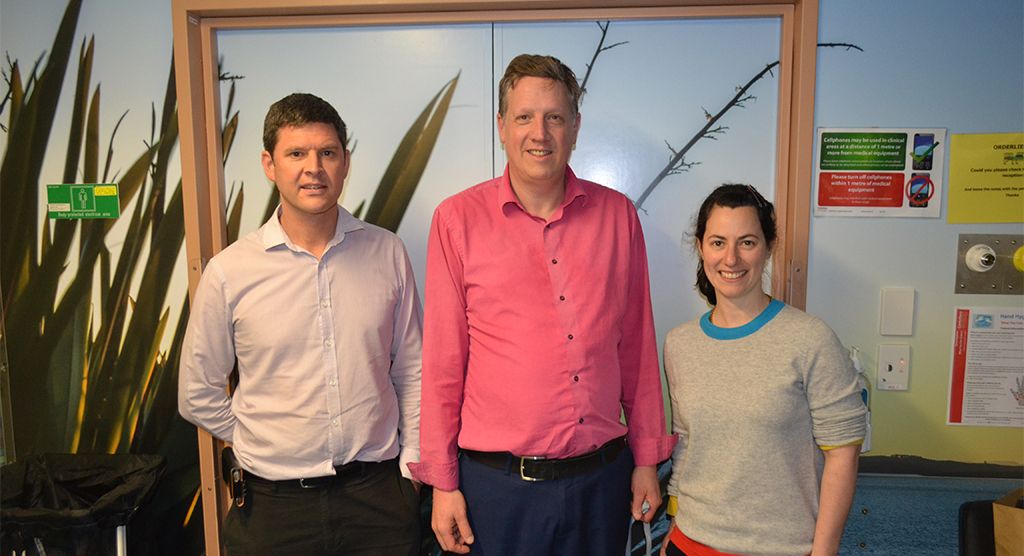Second Leksell Gamma Knife Icon helps Korean center keep up with radiosurgery demand

Samsung Medical Center’s upgrade of Gamma Knife Perfexion to Icon puts clinic on pace to treat 1,800 patients in 2020

As Samsung Medical Center’s (SMC, Seoul, South Korea) Gamma Knife® radiosurgery capabilities have grown over the last two decades, the volume of patients seeking treatment at the hospital has only increased. From the end of 2001 to June 2020, SMC has operated four of the five different generations of Gamma Knife technology, in pursuit of greater radiosurgery speed, functionality and enhanced patient comfort via the option of mask-based head immobilization.
SMC’s latest moves to keep up with demand were the 2010 acquisition of a Leksell Gamma Knife® Perfexion™ followed by Korea’s first-ever installation of the latest-generation Leksell Gamma Knife® Icon™ system in 2016. Then, in 2018, SMC upgraded its Perfexion to Icon. Today, with two Icon radiosurgery systems working full time, the clinic expects to treat 1,800 patients in 2020, an average of 35 patients each week between the two systems.

“We upgraded from Perfexion to Icon because the number of patients we have to manage is increasing continuously,” says Jung-Il Lee, MD, Professor in SMC’s Department of Neurosurgery. “There was a strong business case for the upgrade and hospital management and clinicians appreciated the potential to improve care. Upgrading to Icon also gave us the opportunity to change the eight-year-old Cobalt-60 radiation source. This was important because we treat many patients with multiple brain metastases and these cases require longer beam-on times. It had started to become a serious problem at our center, because as a radiation source ages, the dose rate decreases, making beam-on times even longer.”
With its “younger” Cobalt-60 radiation source, SMC clinicians are using the upgraded Icon with its higher dose rate for cases that take longer to treat, such as patients with multiple brain mets or those with complex indications. Dr. Lee adds that inquisitive Koreans do their research on medical treatments and try to identify centers with newer technology.
“Patients are looking for a Gamma Knife center that can provide a more comfortable treatment,” he says. “Many patients deduce that treatment time on a ‘new’ machine must be shorter and they’re right. There are 20 Gamma Knife centers in Korea, so communication between patients who were treated in different hospitals is common. Furthermore, sharing their experiences through the internet community and blogs is becoming increasingly common. Nowadays, patients know much more than we expect.”
Overall case volume increasing significantly
Gamma Knife radiosurgery continues to gain ground as a frontline treatment at SMC, according to Dr. Lee.
“Nearly all patients with newly developed brain mets are referred for Icon treatment versus linac-based radiotherapy,” he observes. “At the same time, most primary brain tumors are managed with Gamma Knife when the patient is a candidate for radiation therapy. The only exception is a newly diagnosed glioma, which would go to the linear accelerator or proton beam therapy.”
This is the case, he explains, because the standard treatment of high-grade gliomas in Korea, including Samsung Medical Center, is surgical resection followed by standard fractionated radiotherapy with or without concurrent chemotherapy. Most glioma patients who undergo radiotherapy are in this category. Furthermore, it is necessary to follow national insurance system guidelines for reimbursement of subsequent chemotherapy. With low-grade gliomas, radiotherapy is usually contraindicated when surgical removal is sufficient. Radiosurgery is considered in patients with a small volume of residual low-grade glioma after surgical resection or biopsy, although these cases are uncommon. Therefore, single-session or fractionated radiosurgery for newly diagnosed gliomas is not typically performed.
“In addition, in the past, a high percentage of larger tumors went to linac-based radiotherapy, but now, for example, pituitary adenomas, are not referred for fractionated radiotherapy on the linac anymore,” he adds. “Virtually all of them are treated on Icon, as well as tumors in critical areas and recurring tumors after previous linac radiotherapy or radiosurgery.”
Furthermore, over the last few years, SMC’s Department of Neurosurgery and Department of Ophthalmology have cooperated more extensively, with ophthalmologists referring many patients with orbital/intra-orbital lesions for Gamma Knife radiosurgery.
A critical tool in modern neurosurgery
At SMC, fully one-third of neurosurgical therapeutic procedures for brain lesions are performed with Gamma Knife, attesting to the platform’s enduring and critical place in radiotherapy and neurosurgery departments.
“Gamma Knife is an essential element of modern neurosurgery, as much as surgical microscopy,” Dr. Lee says. “Every brain surgeon should be familiar with Gamma Knife radiosurgery and if a center is considering installing a Gamma Knife it should be an Icon, not only from the standpoint of improved quality of care but also from a financial perspective. Even though we do most of the procedures with frame fixation, the patients will agree and trust us only when we can offer a mask-based option.”
Learn more about Gamma Knife Icon.
Specialists make SMC’s Gamma Knife program unique
SMC’s large comprehensive cancer center treats some 10 percent of all cancer cases in Korea, many of whom with serious brain diseases are referred to its Gamma Knife program.
“Five neurosurgeons are involved in our Gamma Knife practice,” Dr. Lee says. “They are specialized not only in radiosurgery, but also in the traditional field of neurosurgery, such as skull base surgery, endoscopic surgery, pediatric neurosurgery and functional neurosurgery. Consequently, we see more patients referred for Gamma Knife radiosurgery as the team is able to make the best decision for the patient based on the patient’s clinical disease status. Therefore, conventional neurosurgery and radiosurgery are not competitive procedures at SMC, but fully complementary to each other.”
Two decades worth of patients helped
SMC has operated four of the five generations of Gamma Knife technology from the end of 2001 to June 2020, benefiting a total of 14,305 patients as of June 30. The patient volumes have increased significantly every year:
- Gamma Knife B (December 2001—February 2004): 494 cases
- Gamma Knife C (March 2004—May 2010): 3,102 cases
- Gamma Knife Perfexion (June 2010—October 2018): 4,708 cases
- Gamma Knife Icon (January 2016—June 2020) 6,001 cases





